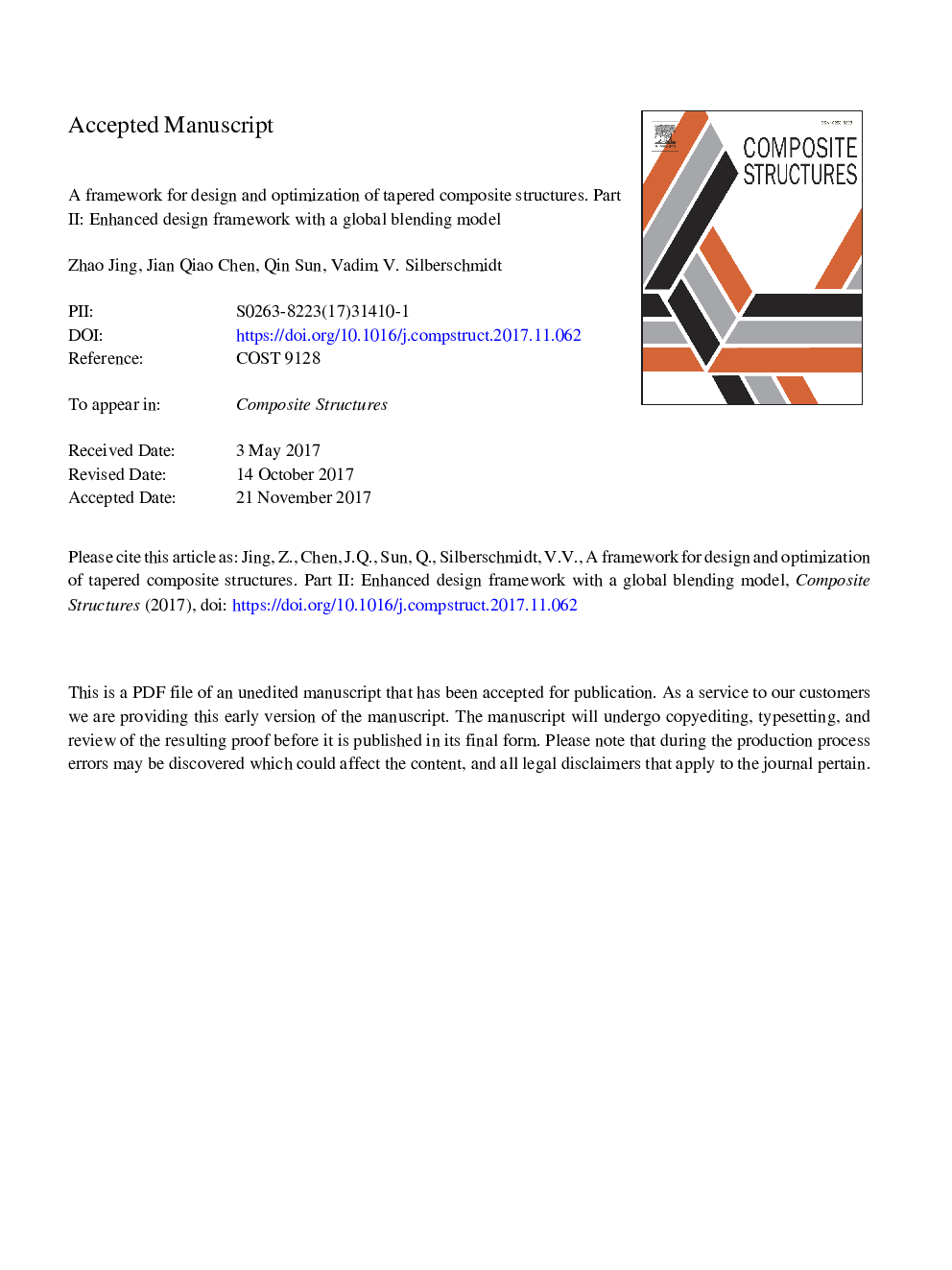| Article ID | Journal | Published Year | Pages | File Type |
|---|---|---|---|---|
| 6704214 | Composite Structures | 2018 | 53 Pages |
Abstract
A high-dimensional variable design space in optimization problems for tapered composite structures presupposes a development of efficient computational techniques to improve the design efficiency and flexibility. In this work, a mathematical model for optimization of tapered composite structures with buckling and manufacturing constraints is developed, then a ply-drop-based global blending model (GBM) is suggested to address the layers' addition/deletion and blending problems. Within the framework proposed in Part I of this work (Compos Struct, 2016, 154: 106-128), by incorporating the global blending model, operations of add-layer, exchange-blend and sequence-adjustment are revised and enhanced. The GBM can not only characterize the global blending property, but also guide the maximum blending design. Accordingly, the design framework is simplified, and its computational cost is reduced significantly since there is no iteration of shape prediction and stacking-sequence optimization procedure. An 18-panel benchmark problem is adopted to verify the enhanced design framework, as compared with previous design results, the obtained better solution with higher efficiency implies its feasibility and potential for effective design of tapered composite structures.
Related Topics
Physical Sciences and Engineering
Engineering
Civil and Structural Engineering
Authors
Zhao Jing, Qin Sun, Jian Qiao Chen, Vadim V. Silberschmidt,
